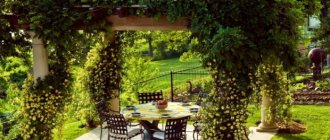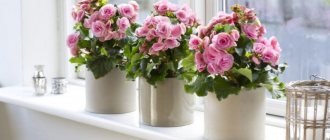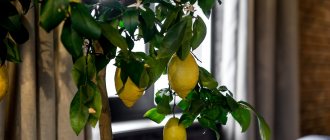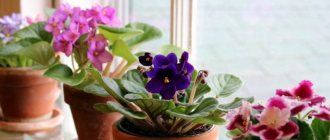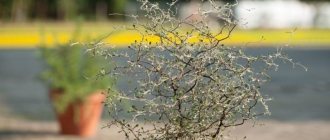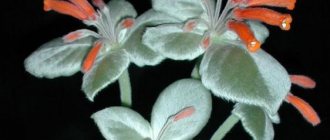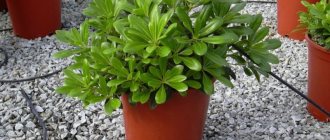For city dwellers, landscaping a loggia or balcony is often the only opportunity to get closer to nature - it is at the same time decoration, a way to lift their spirits, relaxation and easy work with the soil. In order for plants to bring joy, they need to be chosen correctly, for example, flowers for the sunny side should not only be light-loving, but also withstand direct sunlight.
Selection of flowers for growing in the sun
For south-facing balconies, the largest selection of plants can be found among flower beds.
They must meet the following requirements:
- do not be afraid of direct sunlight;
- grow quickly and reach the peak of decorativeness;
- develop normally in a limited volume of a pot, box or other container;
- put up with periodic lack of moisture;
- bloom continuously;
- does not require careful care;
- respond well to mineral supplements.
The owners decide on their own which flowers to plant at home on the sunny side - there are many of them. The article will help you make the right choice - not everyone knows the characteristics of a particular culture. Perhaps gardeners will pay attention to plants that were not previously considered as “candidates” for planting in containers.
Many annual flowerbed flowers are perennials in their homeland. It is possible to save the bushes until the next season, but not all will bloom as profusely as those grown from seeds or cuttings.
Sun-loving houseplants with names
These house flowers need a lot of sun. Everyone feels great on southern windows and next to them.
Cacti (Cactaceae)
The huge family of perennial flowering plants includes 127 genera and 1,750 species. They all come from deserts. Almost all of them are stem succulents, characterized by extremely slow growth and the ability to accumulate large amounts of moisture inside. For normal development and formation of flower buds, they need very bright sun and even heat. But even in partial shade on the north side, the cactus can survive for a long time.
Crassula
The second name is Crassula, and they also like to call it money tree. It is considered a good tradition in the family to keep it in sight. The succulent has thick, fleshy, rounded leaves and easily forms an excellent tree crown.
Note! It feels good on eastern, southern and western windowsills, and may even please you with flowering, which is not particularly beautiful.
Ficus
Belongs to the mulberry family. Only evergreen varieties of ficus are grown in indoor culture. They need bright light all year round. To maintain a decorative appearance in winter, lighting is provided. The most light-loving variegated varieties, which require up to 15 hours of sun per day.
Very large leaves are the hallmark of ficus
Aloe
A perennial herbaceous, tree-like or shrubby succulent with long spiny leaves filled with valuable and medicinal juice, it belongs to the Asphodelaceae family. There are a total of 500 species found in Africa and Arabia. In some species, the leaf grows up to 60 cm in length. Low maintenance. Most of the year it feels good at normal room temperature and likes frequent watering. In winter, lighting is required, watering is reduced, and the temperature can be lowered to 14°C.
Useful and unpretentious aloe succulent
Sansevieria
A stemless evergreen perennial herbaceous plant belonging to the Asparagus family. It is very unpretentious, can grow in bright sun and partial shade, and is valued for its ability to absorb carbon dioxide from the air at night and harmful substances during the day.
Important! Even a flower forgotten on the loggia for half a month will survive such a test without much damage.
Looks especially impressive in flower arrangements. There are varieties with uniform green leaf color, variegated leaves, with a yellow edge.
Sansevieria, various varieties
Petunia for the south balcony
When asked what flowers are not afraid of direct sunlight, are able to remain decorative throughout the season and feel great in container culture, petunia comes to mind first. There are several varieties with different growth patterns and corolla diameters.
Petunias have an attractive appearance, fragrant flowers are symmetrical, similar to a gramophone or a funnel with a long tube. The corollas with fused petals are double or simple, single-colored, edged or covered with streaks. Any color except orange or deep yellow. Fragile stems and small whole leaves are pubescent. The length of the shoots varies from 20 cm to 2 m.
Large-flowered or grandiflora
This petunia comes in many varieties, has the largest flowers, but is the most difficult to care for. The diameter of the corolla in some cultivars reaches 12 cm, and can be double or two-colored.
Plants feel great on a south-facing balcony. But large flowers can be damaged by prolonged rains or strong winds.
To preserve the decorative effect, faded buds must be regularly removed, and bare stems must be trimmed periodically.
Multi-flowered or multiflora
The flowers of this group reach a diameter of 5-7 cm. They are not as beautiful as those of petunia grandiflora, usually of the same color, but they completely cover the bush, which looks especially impressive. The plant is not capricious, resistant to diseases and suffers less from weather disasters.
There are self-cleaning varieties - you don’t need to pick off their wilted buds.
Floribunda
Occupies an intermediate position. Corollas with a diameter of up to 10 cm, varieties differ in a variety of shapes and colors. They suffer from wind and rain, but not as much as grandiflora.
Petunia ampelous or pendula
Often used for vertical gardening, planting in balcony boxes or hanging flowerpots. Despite the long shoots, it is not used as a climbing plant - the branches do not cling to the support, but hang picturesquely.
It’s better not to even try to point the pendula upward with a garter - the stems break easily.
Divided into three groups depending on the length of the shoots:
- semi-ampel - up to 30 cm;
- hanging - 35-80 cm;
- cascade - up to 2 m (usually about 1 m).
Surfinia, an ampelous petunia bred by the Japanese company Suntory, belongs to this group.
Upright flowers for the sunny side
Planting flowers that form a compact bush or spreading, but do not have flowing shoots, for the sunny side is usually done in balcony boxes or pots. If you place them in hanging pots, the plant will be difficult to see and will lose some of its attractiveness.
Gatsania
African chamomile forms a bush up to 30 cm high. The inflorescence is a basket with a diameter of 5-9 cm with a yellow center and bright petals: yellow, red, orange, white. They can be one color, but more often they are decorated with longitudinal strokes and a contrasting dark spot at the base.
Drought-resistant crop. One bush per season, with satisfactory feeding and timely removal of faded buds, can produce up to 35 flowers.
If you leave several gatsanias in a bright, cool place for the winter, in the spring the bush can be divided into rosettes and planted. They will bloom earlier than those obtained from seeds.
Violet tricolor
You can grow pansies on a sunny balcony. This unpretentious miniature plant is distinguished by dark narrow leaves and an asymmetrical five-petal corolla with a diameter of up to 10 cm.
It seems that the flowers are as unique as snowflakes - even on the same bush their color is at least slightly different. It can vary from white to almost black - deep purple or burgundy, be plain or combined, with spots or streaks of different sizes.
Pansies grown in a two-year culture bloom longer and more abundantly.
Tagetis or marigolds
Varieties of marigolds with a height of 20 to 50-60 cm are excellent flowers for a sunny loggia. They form an erect bush with feathery leaves, hollow stems, simple, semi-double or double inflorescences-baskets and a pronounced cylindrical spathe. Depending on the variety, Tagetis flowers have a diameter of 1-6 cm and are yellow, orange, or brown in color.
When rubbed, all parts of the plant emit a strong, pleasant aroma.
Since the root system of marigolds is taprooted, you need to choose a deep pot or box. To ensure the continuous formation of new buds, the “heads” that have lost their decorative effect are torn off.
Ampelous flowers for the sunny side
The most popular plants for planting on the balcony are plants with bright buds and flexible stems that beautifully bend or fall below the edge of the container. They are called ampelous or ampelous. Many can withstand direct sunlight very well.
Lobelia
A compact, dense bush with thin, densely branched shoots 10-20 cm long, completely dotted with small two-lipped flowers with a diameter of no more than 2 cm. They are usually painted blue, violet or light blue, but there are varieties with white and purple corollas, or stems reaching 1 .5 m.
Flowering begins in June, lasts until September, and with good care longer. Lobelia is usually planted with other plants, for example, geraniums, tagetis, petunias of contrasting colors.
The seeds germinate well, but when picking, inexperienced gardeners often have problems. Lobelia seedlings are tiny; the stems are not separated one by one, but are planted in individual cups in bunches.
Nasturtium or capuchin
Among the varieties there are vines, ampels and erect bushes with flexible shoots. In nasturtium, not only the yellow, orange or red asymmetrical funnel-shaped flowers, but also the leaves are of decorative value.
Capuchin is not only an ornamental plant, but also an edible and medicinal plant.
Pelargonium or geranium
There are many species used as flower beds, container plants and indoor plants. As flowers for the sunny side of the balcony, varieties of ampelous (ivy-leaved) geraniums are of greatest interest.
The plant is a bush with shoots from 25 cm to 1 m long, first ascending, then drooping. The flowers are collected in an umbrella and can be simple, double, similar to pink buds that have not fully opened. Color – white, all shades of pink, red, to very dark burgundy.
The leaves are quite hard, smooth, similar to ivy. When rubbed they release a specific aroma. It is believed to calm and relieve headaches.
Pelargonium ivy blooms almost continuously.
This is a perennial plant; with the onset of cold weather, flowerpots can be brought into the house, and bushes can be transplanted from a balcony box into pots. To preserve its decorative appearance, it needs to trim the stems and remove faded flower stalks.
Photos and names of light-loving, unpretentious and drought-resistant varieties
Gatsania
Gazania is an ideal option for a southern balcony: Gazania loves the sun very much and always opens up to meet it, closing in cloudy weather. Gatsania flowers are bright, similar to asters, different colors, most often gradient.
Gatsaniya is unpretentious in care and easily tolerates a lack of moisture, although it does not bloom so brightly and abundantly.
Violet
Violets (Violet) are small plants with velvety leaves and round flowers of different colors. They take up very little space, so you can place several pots with different varieties nearby. This way you can make a whole flowering carpet.
In direct sunlight, violet leaves fade white, so it is recommended to shade them during the hottest hours of the day.
Petunia
Petunia is divided into many varieties of different species, but it is recommended to grow low potted varieties on a sunny balcony. Large flowers or ampelous branches can be burned by the sun.
Read more about the varieties of petunia and how to plant it on the balcony here.
Marigold
Marigolds (Tagetes) are entire bouquets of bright yellow or orange flowers. In the garden they bloom in August-September, but among the indoor varieties there are those that bloom all summer, provided that the faded heads are trimmed in a timely manner.
Marigolds need a deep box because the roots go straight down.
Lobelia
Lobelia is a densely flowering ampelium, behind the small flowers of which the green part of the plant is not even noticeable. Flowers can be pink, blue, lilac, white and others - depending on the variety. Flowering continues throughout the summer or even longer.
Lobelia needs to be planted with several branches in one pot, otherwise the thin shoots will not survive individually. But the result is a rather lush, spreading bush with branches hanging down.
Lobelia is accustomed to the sun, but under constant scorching rays its flowers can fade, so it is recommended to place it in a shaded corner.
Nasturtium
Nasturtium (or capuchin, Tropaeolum) is a small plant with pitcher-shaped leaves and bright flowers. It blooms all summer long, but requires regular watering and feeding.
Pelargonium
Pelargonium or geranium (Pelargonium) loves the sun, but does not tolerate wind well, so it is recommended to grow it on glazed balconies. It blooms brightly and luxuriantly even in the absence of watering for several days, but it is demanding on fertilizer: there must be a lot of it.
Sweet pea
Another name for the fragrant rank (Lathyrus odoratus). This is a fast-growing bindweed with thin shoots covered with light green leaves and bright fragrant flowers. Supports are made for it, along which the shoots can grow in a controlled manner.
Sweet peas not only tolerate the scorching sun, but also protect the balcony from it, i.e., it does not allow the heat inside and prevents the formation of stuffiness.
The main thing is to trim the shoots in time, otherwise the plant will fill not only the entire balcony, but also everything nearby.
morning glory
Morning glory (Ipomoea) is a fast-growing bindweed with bright, large flowers that are renewed every day. To grow morning glory, you need to provide it with supports along which its shoots will curl - this way you can form an entire green wall. The advantage of bindweed on a sunny balcony is that it can create shade and hold back the heat.
Kobeya
Cobaea. Another way to shade a sunny balcony is the kobeya vine. The long climbing shoots contain large green leaves and clusters of large elongated bright flowers, which makes the “green wall” quite unusual. It is only important not to forget to trim off unnecessary or overly long shoots in a timely manner.
It is recommended to plant kobeya in February as seedlings, and transfer it to the balcony in May - it takes a very long time to sprout and develop.
Calendula
Calendula (Calendula) pleases the eye with many bright orange flowers stretching towards the sun. She is very unpretentious and loves the sun, but needs regular watering. For the balcony it is recommended to choose low varieties.
If you cut off faded buds, new ones appear in their place - this way you can prolong flowering.
Fragrant tobacco
Nicotiana alata loves sun, warmth and regular watering. It blooms profusely, and every evening after sunset the flowers open and begin to smell fragrant until dawn. Contrary to its name, the plant does not contain nicotine.
Disadvantage: it is very picky about the soil and the choice of fertilizers.
Canna
Canna. Another flowering plant that does well in direct sunlight. Despite the abundance of large, bright flowers, canna does not smell, so it is more suitable for allergy sufferers. In addition to flowers, large pointed leaves are also attractive and look stylish.
Dahlias
Dahlia. Dahlia flowers are large bright balls of various colors. The plant itself looks like a huge bouquet that pleases the eye for several weeks. This is an excellent decoration for a sunny balcony, because it is bright light and warmth that dahlias need for best growth and development (subject to abundant watering).
Zinnia
Zinnia are small flowering bushes that are usually planted in oblong containers. Flowers can be white, red, orange, yellow, and even the shape of the petals can depend on the variety, although the doubleness is constant.
Mignonette
Reseda is unpretentious, but has a strong, pleasant aroma. For abundant flowering, it needs to be watered regularly and the faded clusters must be cut off.
An interesting feature of mignonette: it is both bushes and shoots spreading to the sides. The variety of colors also adds to the attractiveness.
Kermek
Also called sea lavender and immortelle (Limonium). It does not tolerate shade and coolness well, so a sunny, warm balcony is an ideal place for it. It blooms thickly and brightly, pleasing to the eye. At the same time, it easily tolerates lack of moisture and poor soil - such conditions have practically no effect on flowering.
Phlox Drummond
Phlox drummondii. There are varieties of almost any color, but regardless of the chosen option, the flower tolerates heat and scorching sun well. The only condition is that the roots should not be allowed to overheat (loose soil and good drainage help with this).
Drummonda is often planted with other plants, creating an interesting composition and at the same time protecting the root part from the sun.
Ageratum
Ageratum. It is distinguished by lush and fluffy double flowers of a delicate bluish-lilac color, which cover the entire top of the plant. For abundant flowering, the soil needs to be regularly loosened and fertilized, but even without this, the ageratum will bloom, although not so luxuriantly.
Purslane
At home, purslane (Portulaca) is usually grown in pots, but a flower pot is better suited for a balcony - then the branches and flowers will hang down, forming a shady space and creating coziness. You can plant several different varieties in one pot, then you will get an interesting blooming bouquet.
Purslane loves the sun very much, so it does not suffer even from direct scorching rays.
Carnation
Dianthus. For the balcony, it is recommended to choose low-growing varieties of carnations so that they are not damaged by the wind. Particularly attractive is a mixture of different varieties growing in one container.
Carnations do not need to be sprayed, they do not need abundant watering and love the sun very much, so the south side is ideal for it.
Mattiola
Another name: Levkoy (Matthiola). It blooms for about a month, but with proper care longer. Loves the sun and feels fine under its direct rays. Does not tolerate stuffiness and stagnant air, needs regular root watering.
Salvia
Or sage (Salvia). Distinguished by bright red, pink or purple vertical clusters of small flowers. Loves sun, loose and nutritious soil and good air circulation. On cold days, it is recommended to take salvia into a warm house, as it does not tolerate low temperatures.
Mother of thousands
The advantage of Cymbalaria is not its bright, beautiful flowers (they are small and almost invisible), but its abundant, dense greenery. It is better to plant it in a flower pot as an ampel plant, so that the shoots hang down and curl.
If you leave cymbalaria for the winter, the shoots will dry out, but in the spring new ones will sprout on their own.
sedum
Or Sedum. Neither dry nor poor soil prevents this plant from living - it will feel normal under any conditions. It has lush clusters of small flowers that can be white, pale pink, greenish pink, glaucous and others. If you mix several varieties, you will get an unusual composition, and with proper pruning you can even form inscriptions and symbols.
Succulents
The homeland of succulents is deserts with scorching sun and minimal moisture, so they are better suited for a sunny, hot balcony than anything else. They are presented in a wide variety of varieties, shapes, colors and features, and therefore they can be assembled into a whole composition pleasing to the eye.
The advantage is that succulents will not die if you forget about them for a few days.
Climbing plants for a balcony in the sun
Perhaps this is the smallest group for landing on loggias. It is necessary that the flowers not only withstand direct sunlight, continuously produce buds, but also grow quickly.
Sweet pea or china
There are more than 1000 varieties. The plant is widely used in vertical gardening and is valued for its pleasant aroma and abundant flowering. The flexible stems are decorated with light green pinnate leaves, at the top of which there are tendrils clinging to the support. Branches weakly.
The flowers are collected 3-7 pieces in a brush, asymmetrical, similar to a sail or moths. Buds appear from June-July until frost. Any color except yellow.
Sweet peas will not grow in a flat pot.
morning glory
A liana about 5 m long with heart-shaped leaves is often called a loach. The flowers look like a gramophone, have a long stem and a pleasant smell. They densely dot the shoots, open only in bright sun, and are closed in cloudy weather. Blue, violet, blue, pink, red buds appear at the beginning of summer, replacing each other, decorating southern balconies until frost.
Kobeya
One of the most beautiful flowers for a balcony on the sunny side is the climbing, fast-growing annual kobeya shrub. The liana is up to 6 m long and can cling to brickwork or other uneven surfaces. The leaves are beautiful, pinnate, with 3 large lobes.
The flowers are bell-shaped, with a wavy edge of the corolla, up to 8 cm in diameter, on long stalks. The buds are greenish-yellow, and when fully opened they become white, purple, or different shades of purple.
It is difficult to choose flowers for the sunny side - there are many of them, all are beautiful, most are easy to care for. Here it is important to observe the measure and make sure that the colors are combined and the smells do not mix.
Indoor plants that love direct sunlight without spraying
Many house flowers need periodic moistening of the leaves or maintaining high air humidity. For those who cannot devote a lot of time to plants, species that prefer arid conditions are suitable.
Dollar tree or Zamioculcas
One single species that comes from Africa and belongs to the Araceae family. The heat-loving plant prefers a temperature of 18-26°C. It tolerates drought easily and does not require air humidification. Water only after the soil has completely dried.
Note! It can grow in partial shade, but it acquires its spectacular appearance with shiny leaves only in bright sun.
Kalanchoe
A succulent from the Crassulaceae family with bare or pubescent leaves, on which buds often grow, producing new plants (babies). There are about 200 species in total. Some look like subshrubs, others are herbaceous. The inflorescence grows on thick stems and has the appearance of an umbrella in white, yellow, purple or red shades.
A large amount of bright light is the main condition for proper development and beautiful flowering. For most of the year it feels good in an apartment at a temperature of 18-26°C, but in winter it needs a period of rest at 14-16°C. Can grow without spraying. It is recommended to water through a tray and very moderately.
Pelargonium (Pelargonium)
A perennial herbaceous plant or subshrub native to South Africa. Stems can be straight or creeping. The flower has a simple palmate or palmately dissected leaf with pubescence. It is very similar to geranium, but has a genetic difference.

